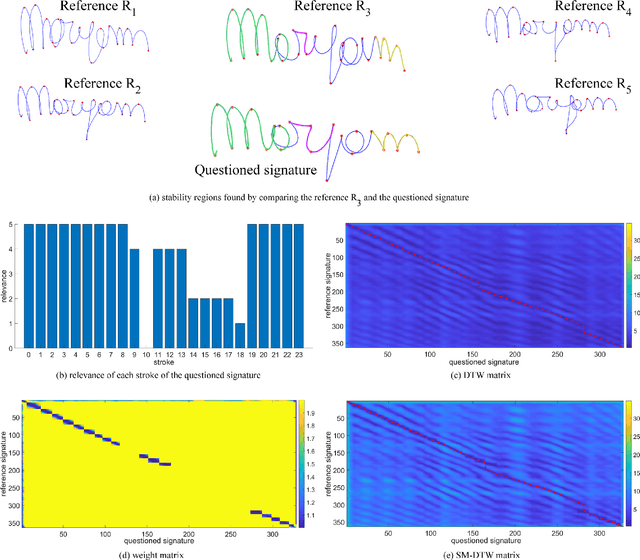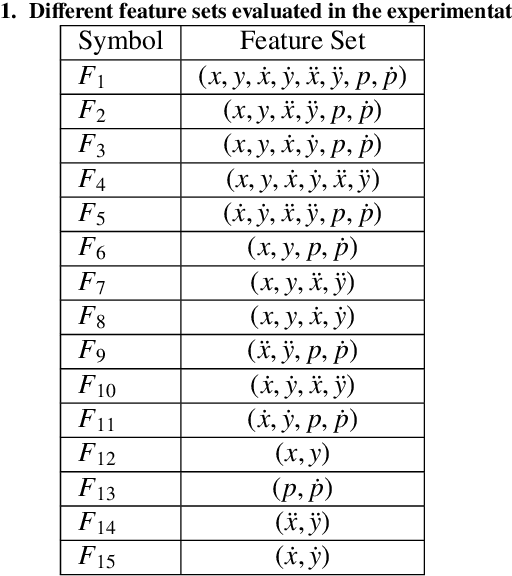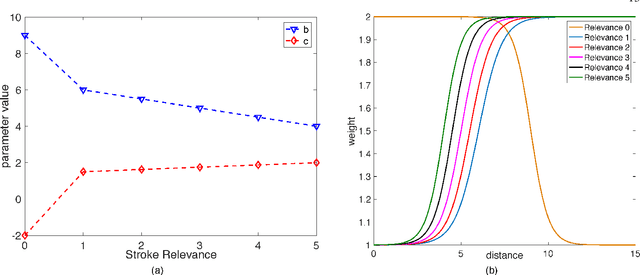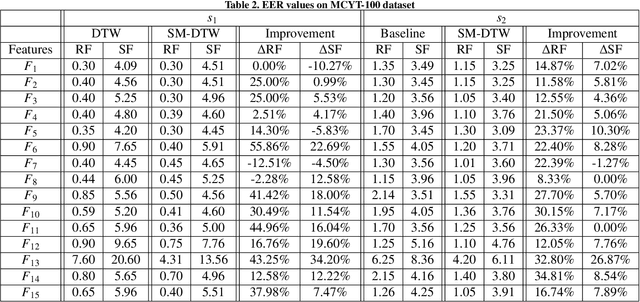SM-DTW: Stability Modulated Dynamic Time Warping for signature verification
Paper and Code
May 20, 2024



Building upon findings in computational model of handwriting learning and execution, we introduce the concept of stability to explain the difference between the actual movements performed during multiple execution of the subject's signature, and conjecture that the most stable parts of the signature should play a paramount role in evaluating the similarity between a questioned signature and the reference ones during signature verification. We then introduce the Stability Modulated Dynamic Time Warping algorithm for incorporating the stability regions, i.e. the most similar parts between two signatures, into the distance measure between a pair of signatures computed by the Dynamic Time Warping for signature verification. Experiments were conducted on two datasets largely adopted for performance evaluation. Experimental results show that the proposed algorithm improves the performance of the baseline system and compares favourably with other top performing signature verification systems.
 Add to Chrome
Add to Chrome Add to Firefox
Add to Firefox Add to Edge
Add to Edge